Related Research Articles

Japanese art consists of a wide range of art styles and media that includes ancient pottery, sculpture, ink painting and calligraphy on silk and paper, ukiyo-e paintings and woodblock prints, ceramics, origami, bonsai, and more recently manga and anime. It has a long history, ranging from the beginnings of human habitation in Japan, sometime in the 10th millennium BCE, to the present day.

Ueno Park is a spacious public park in the Ueno district of Taitō, Tokyo, Japan. The park was established in 1873 on lands formerly belonging to the temple of Kan'ei-ji. Amongst the country's first public parks, it was founded following the western example as part of the borrowing and assimilation of international practices that characterizes the early Meiji period. The home of a number of major museums, Ueno Park is also celebrated in spring for its cherry blossoms and hanami. In recent times the park and its attractions have drawn over ten million visitors a year, making it Japan's most popular city park.

The Arisugawa-no-miya (有栖川宮) was one of the shinnōke, branches of the Imperial Family of Japan which were, until 1947, eligible to succeed to the Chrysanthemum Throne in the event that the main line should die out.

The Tokyo National Museum or TNM is an art museum in Ueno Park in the Taitō ward of Tokyo, Japan. It is one of the four museums operated by the National Institutes for Cultural Heritage, is considered the oldest national museum in Japan, is the largest art museum in Japan, and is one of the largest art museums in the world. The museum collects, preserves, and displays a comprehensive collection of artwork and cultural objects from Asia, with a focus on ancient and medieval Japanese art and Asian art along the Silk Road. There is also a large collection of Greco-Buddhist art. As of April 2023, the museum held approximately 120,000 Cultural Properties, including 89 National Treasures, 319 Horyuji Treasures, and 649 Important Cultural Properties. As of the same date, the Japanese government had designated 902 works of art and crafts as National Treasures and 10,820 works of art and crafts as Important Cultural Properties, so the museum holds about 10% of the works of art and crafts designated as National Treasures and 6% of those designated as Important Cultural Properties. The museum also holds 2,651 cultural properties deposited by individuals and organisations, of which 54 are National Treasures and 262 are Important Cultural Properties. Of these, 3,000 cultural properties are on display at one time, with each changing for between four and eight weeks. The museum also conducts research and organizes educational events related to its collection.
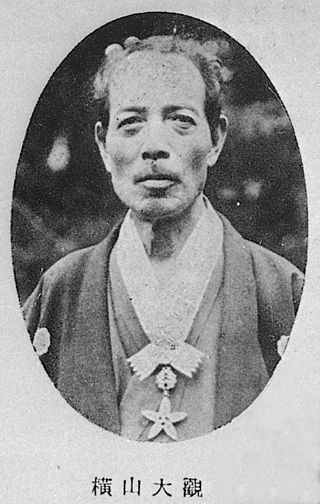
Yokoyama Taikan was the art-name of a major figure in pre-World War II Japanese painting. He is notable for helping create the Japanese painting technique of Nihonga.

Japanese painting is one of the oldest and most highly refined of the Japanese visual arts, encompassing a wide variety of genres and styles. As with the history of Japanese arts in general, the long history of Japanese painting exhibits synthesis and competition between native Japanese aesthetics and the adaptation of imported ideas, mainly from Chinese painting, which was especially influential at a number of points; significant Western influence only comes from the 19th century onwards, beginning at the same time as Japanese art was influencing that of the West.

Prince Arisugawa Takehito was the 10th head of a cadet branch of the Japanese imperial family and a career officer in the Imperial Japanese Navy.
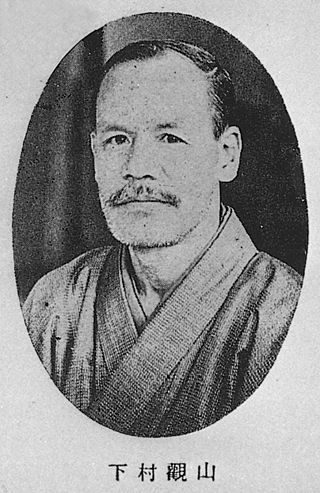
Kanzan Shimomura was the pseudonym of a nihonga painter in Meiji through to the early Shōwa period Japan. His real name was Shimomura Seizaburō.

Takeuchi Seihō was a Japanese painter of the Nihonga genre, active from the Meiji through the early Shōwa period. One of the founders of nihonga, his works spanned half a century and he was regarded as master of the prewar Kyoto circle of painters. His real name was Takeuchi Tsunekichi.
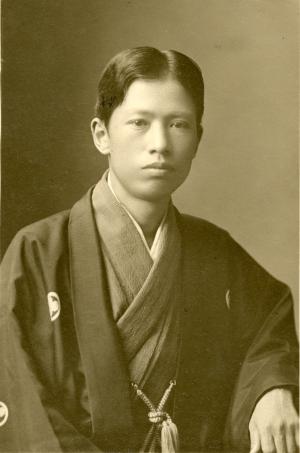
Hishida Shunsō was the pseudonym of a Japanese painter from the Meiji period. One of Okakura Tenshin's pupils along with Yokoyama Taikan and Shimomura Kanzan, he played a role in the Meiji era innovation of Nihonga. His real name was Hishida Miyoji. He was also known for his numerous paintings of cats.

Prince Arisugawa Takahito was the eighth head of the Arisugawa-no-miya (有栖川宮家) house, one of the shinnōke branches of the Imperial Family of Japan, which were eligible to succeed to the Chrysanthemum Throne in the event that the main line should die out.

Prince Arisugawa Taruhito was a Japanese career officer in the Imperial Japanese Army, who became the 9th head of the Arisugawa-no-miya (有栖川宮家) line of shinnōke cadet branches of the Imperial Family of Japan on September 9, 1871.

The Imperial Japanese Army General Staff Office, also called the Army General Staff, was one of the two principal agencies charged with overseeing the Imperial Japanese Army.
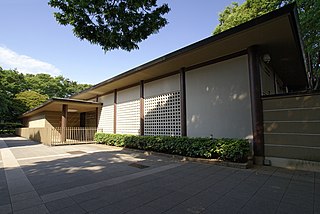
Japan Art Academy is the highest-ranking official artistic organization in Japan. It is established as an extraordinary organ of the Japanese Agency for Cultural Affairs in the thirty-first article of the law establishing the Ministry of Education, Culture, Sports, Science and Technology. The Academy discusses art-related issues, advises the Minister of Education, Culture, Sports, Science and Technology on art-related issues, and promotes arts in three categories: 1) fine art, 2) literary arts, 3) music, drama, and dance. It is closely associated with the annual Japan Art Academy Exhibition (Nitten), the premier art exhibition in Japan; the Japan Art Academy originally ran the Nitten but since 1958 the exhibition is run by a separate private institution. The Japan Art Academy headquarters is in Ueno Park, Tokyo.

Kiyokata Kaburaki was the art-name of a Nihonga artist and the leading master of the bijin-ga genre in the Taishō and Shōwa eras. His legal name was Kaburaki Ken'ichi. The artist himself used the reading "Kaburaki", but many Western sources transliterate it as "Kaburagi".

Yoshihito, posthumously honored as Emperor Taishō, was the 123rd emperor of Japan, according to the traditional order of succession, and the second monarch of the Empire of Japan from 1912 until his death in 1926. The era he presided over is known as the Taishō era.
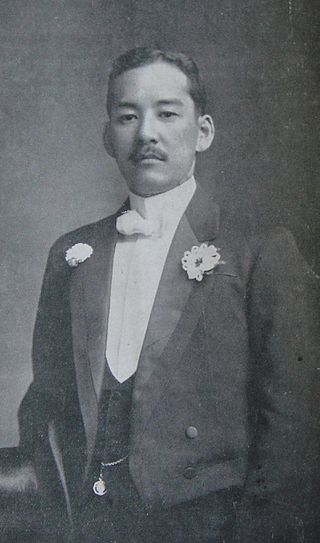
Komuro Suiun is the pseudonym of a Japanese nihonga painter who worked mainly in the nanga style, active from the Meiji period (1868–1912) to the Shōwa period (1926–1989).

Princess Yoshiko was the younger sister of Prince Tsunahito of the Arisugawa-no-miya cadet branch of the Imperial House of Japan. Yoshiko was married to Tokugawa Nariaki, and was mother to the 10th Lord Yoshiatsu, and the 15th and final Tokugawa shogun, Tokugawa Yoshinobu.
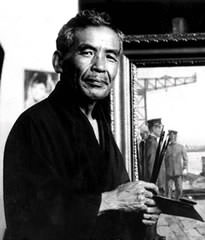
Wada Eisaku was a Japanese painter and luminary of the yōga scene in the late Meiji, Taishō, and Shōwa eras. He was a member of the Japan Art Academy, an Imperial Household Artist, a recipient of the Order of the Sacred Treasure and Order of Culture, an Officier in the Légion d'honneur, and a Person of Cultural Merit.

The Office of Japanese Classics Research was a central government organization for the training of the Shinto priesthood in Japan. It was established by the Meiji Government in 1882 as the successor organization to the Bureau of Shinto Affairs. Prince Arisugawa Takahito was its first leader.